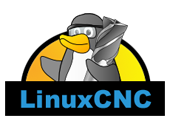Category: General LinuxCNC Questions
General configuration information:
BoardName : MESA7I92
FPGA Size: 20 KGates
FPGA Pins: 256
Number of IO Ports: 2
Width of one I/O port: 17
Clock Low frequency: 100.0000 MHz
Clock High frequency: 180.0000 MHz
IDROM Type: 3
Instance Stride 0: 4
Instance Stride 1: 64
Register Stride 0: 256
Register Stride 1: 256
Modules in configuration:
Module: DPLL
There are 1 of DPLL in configuration
Version: 0
Registers: 7
BaseAddress: 7000
ClockFrequency: 100.000 MHz
Register Stride: 256 bytes
Instance Stride: 4 bytes
Module: WatchDog
There are 1 of WatchDog in configuration
Version: 0
Registers: 3
BaseAddress: 0C00
ClockFrequency: 100.000 MHz
Register Stride: 256 bytes
Instance Stride: 4 bytes
Module: IOPort
There are 2 of IOPort in configuration
Version: 0
Registers: 5
BaseAddress: 1000
ClockFrequency: 100.000 MHz
Register Stride: 256 bytes
Instance Stride: 4 bytes
Module: MuxedQCount
There are 12 of MuxedQCount in configuration
Version: 4
Registers: 5
BaseAddress: 3600
ClockFrequency: 100.000 MHz
Register Stride: 256 bytes
Instance Stride: 4 bytes
Module: MuxedQCountSel
There are 1 of MuxedQCountSel in configuration
Version: 0
Registers: 0
BaseAddress: 0000
ClockFrequency: 100.000 MHz
Register Stride: 256 bytes
Instance Stride: 4 bytes
Module: SSerial
There are 1 of SSerial in configuration
Version: 0
Registers: 6
BaseAddress: 5B00
ClockFrequency: 100.000 MHz
Register Stride: 256 bytes
Instance Stride: 64 bytes
Module: LED
There are 1 of LED in configuration
Version: 0
Registers: 1
BaseAddress: 0200
ClockFrequency: 100.000 MHz
Register Stride: 256 bytes
Instance Stride: 4 bytes
Configuration pin-out:
IO Connections for P2
DB25 pin# I/O Pri. func Sec. func Chan Sec. Pin func Sec. Pin Dir
1 0 IOPort SSerial 0 TXEn2 (Out)
14 1 IOPort SSerial 0 TXData2 (Out)
2 2 IOPort SSerial 0 RXData2 (In)
15 3 IOPort SSerial 0 TXData1 (Out)
3 4 IOPort SSerial 0 RXData1 (In)
16 5 IOPort SSerial 0 TXData0 (Out)
4 6 IOPort SSerial 0 RXData0 (In)
17 7 IOPort MuxedQCountSel 0 MuxSel0 (Out)
5 8 IOPort MuxedQCount 0 MuxQ-A (In)
6 9 IOPort MuxedQCount 0 MuxQ-B (In)
7 10 IOPort MuxedQCount 0 MuxQ-IDX (In)
8 11 IOPort MuxedQCount 1 MuxQ-A (In)
9 12 IOPort MuxedQCount 1 MuxQ-B (In)
10 13 IOPort MuxedQCount 1 MuxQ-IDX (In)
11 14 IOPort MuxedQCount 2 MuxQ-A (In)
12 15 IOPort MuxedQCount 2 MuxQ-B (In)
13 16 IOPort MuxedQCount 2 MuxQ-IDX (In)
IO Connections for P1
DB25 pin# I/O Pri. func Sec. func Chan Sec. Pin func Sec. Pin Dir
1 17 IOPort SSerial 0 TXEn5 (Out)
14 18 IOPort SSerial 0 TXData5 (Out)
2 19 IOPort SSerial 0 RXData5 (In)
15 20 IOPort SSerial 0 TXData4 (Out)
3 21 IOPort SSerial 0 RXData4 (In)
16 22 IOPort SSerial 0 TXData3 (Out)
4 23 IOPort SSerial 0 RXData3 (In)
17 24 IOPort MuxedQCountSel 6 MuxSel0 (Out)
5 25 IOPort MuxedQCount 3 MuxQ-A (In)
6 26 IOPort MuxedQCount 3 MuxQ-B (In)
7 27 IOPort MuxedQCount 3 MuxQ-IDX (In)
8 28 IOPort MuxedQCount 4 MuxQ-A (In)
9 29 IOPort MuxedQCount 4 MuxQ-B (In)
10 30 IOPort MuxedQCount 4 MuxQ-IDX (In)
11 31 IOPort MuxedQCount 5 MuxQ-A (In)
12 32 IOPort MuxedQCount 5 MuxQ-B (In)
13 33 IOPort MuxedQCount 5 MuxQ-IDX (In)


